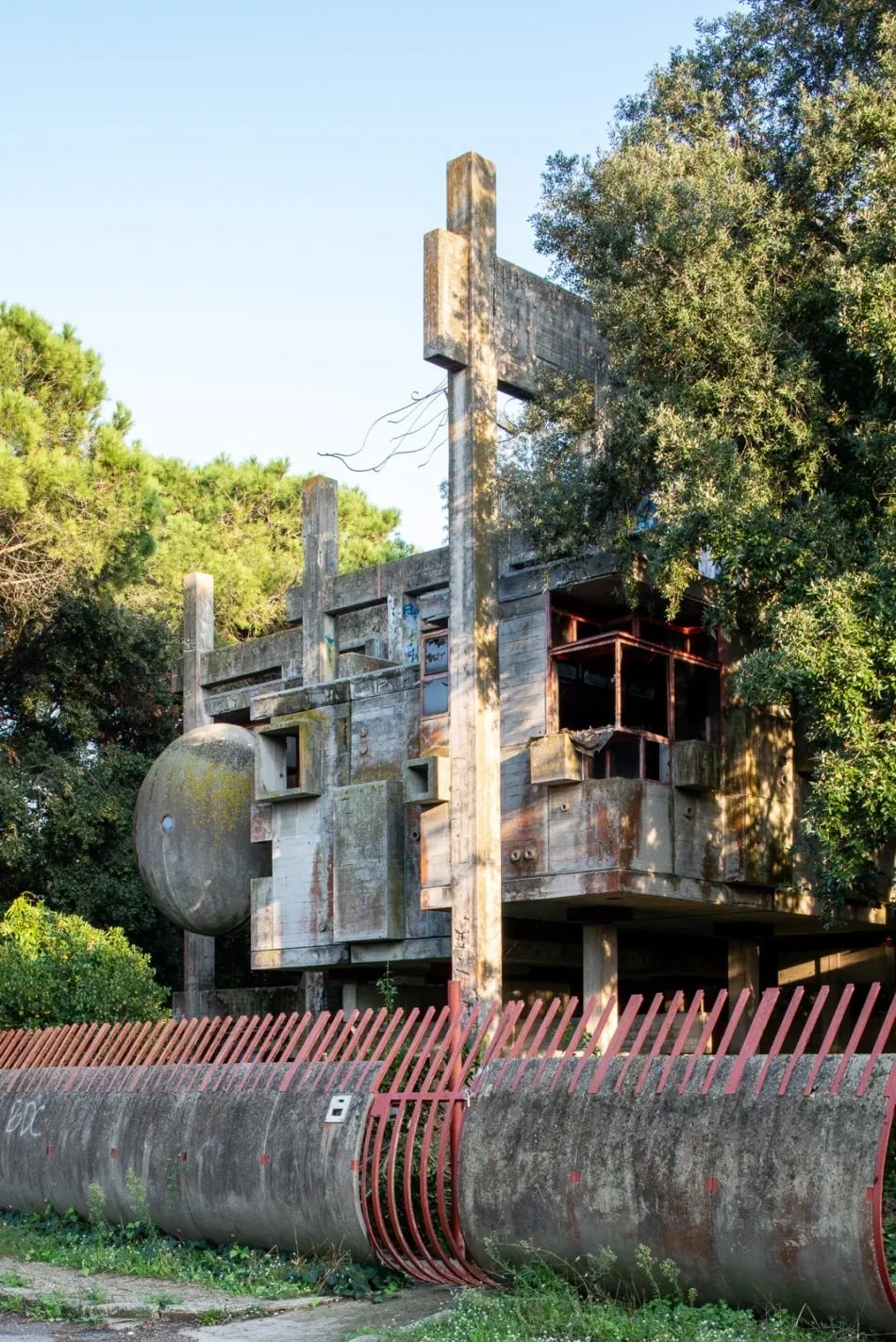Have you ever wondered what happens when a family of three architects—father, mother, and child—come together to blend their creative minds and experiment with design and architectural theories in their own holiday home? The result can be seen in the Perugini family’s villa in Fregene, a unique structure now sadly abandoned and vandalized, resembling a futuristic spaceship that has landed from another world.
The CASA SPERIMENTALE, located in a coastal town on the outskirts of Rome, has been slowly deteriorating since its creator passed away in 1995. This eccentric building is a captivating geometric marvel, constructed from a combination of shapes and building materials.

Giuseppe Perugini, alongside his wife Uga De Plaisant and their son Raynaldo Perugini, erected this remarkable building in the late 1960s. Their holiday home’s creation served not only as a reflection on living spaces but also as an experiment to test the technical feasibility of some of Perugini’s innovative concepts.

The architects’ approach to design and construction resembled a sort of architectural play. Their son, Raynaldo, affectionately calls the house the ‘unfinishable endless house.’ Conceived akin to a set of giant Lego blocks, all the wall elements are bolted together, allowing for their removal and rearrangement, resulting in various spatial configurations and fostering diverse connections between the structure and its surroundings.
Once a hub for an intellectual and bohemian community in Fregene during the summers from the early 1960s to the late 1970s, the house, now deserted, has found a new lease on life in the age of social media. It has become a sought-after spot for Instagram photos, attracting attention as the perfect locale for geotagging. Additionally, urban subcultures have embraced the structure as an ideal canvas for graffiti, adding contemporary layers of expression to its unconventional design.

The future of the house remains uncertain. Despite several efforts to safeguard and conserve it for future generations, indications of structural problems are becoming evident, especially concerning the metal connections of the concrete superstructure. Sadly, there’s a chance, albeit a distressing one, that the house could be lost in the foreseeable future.




